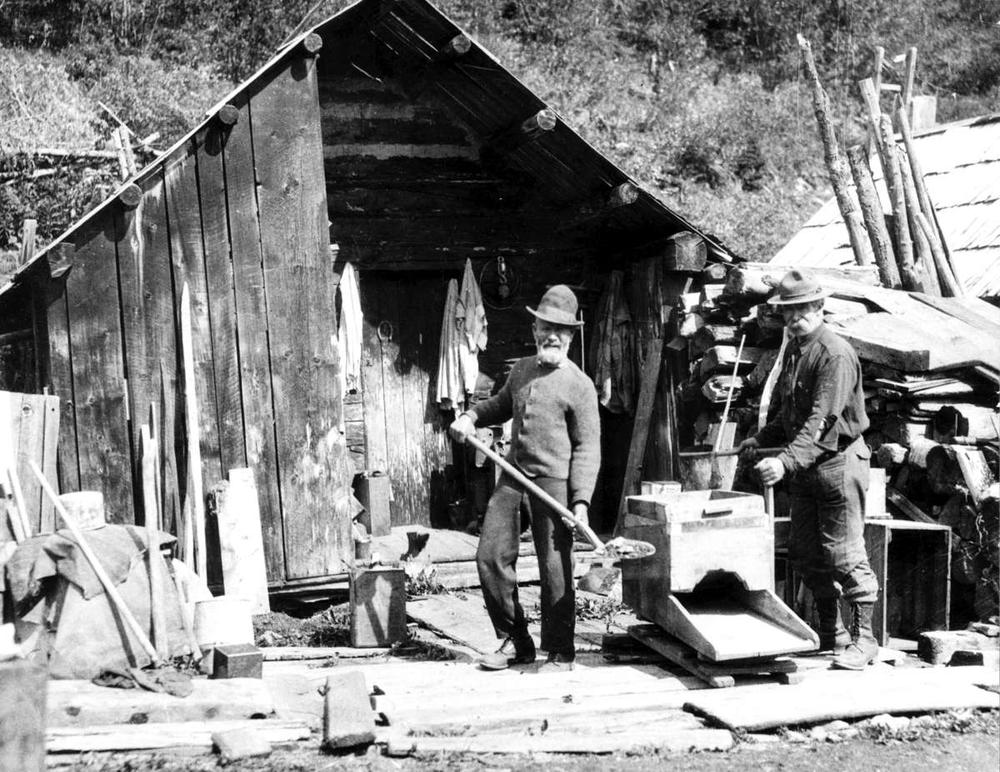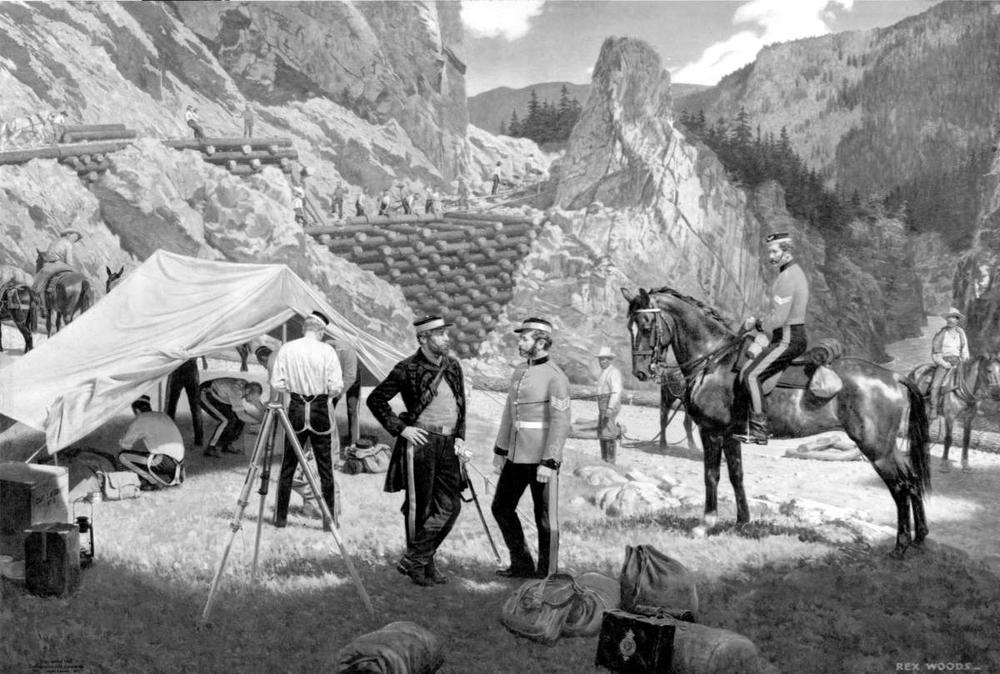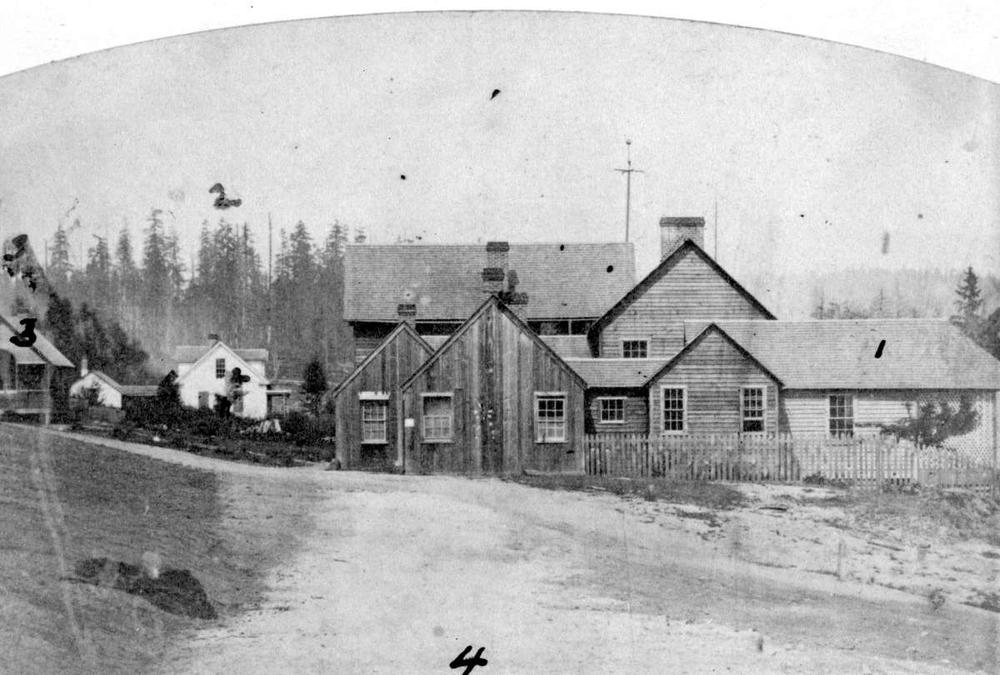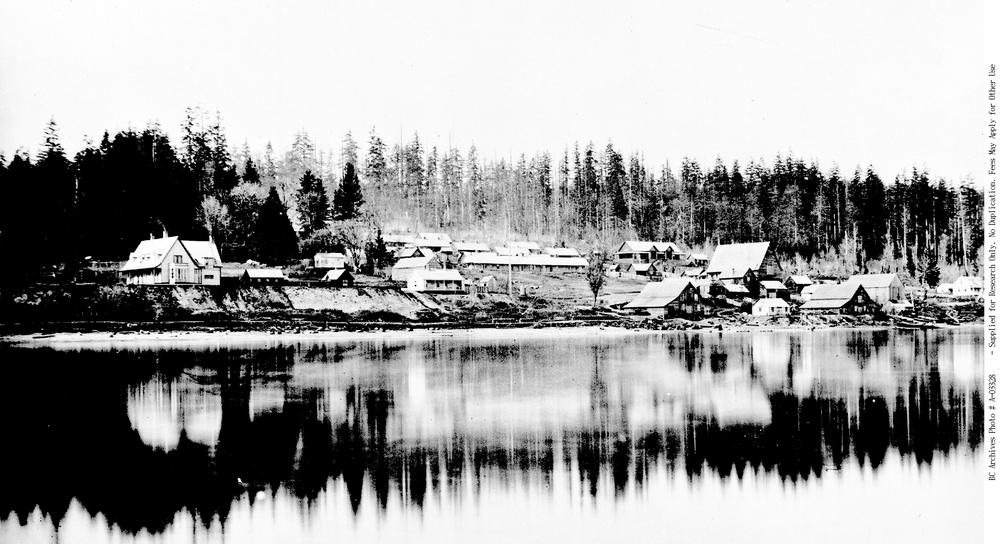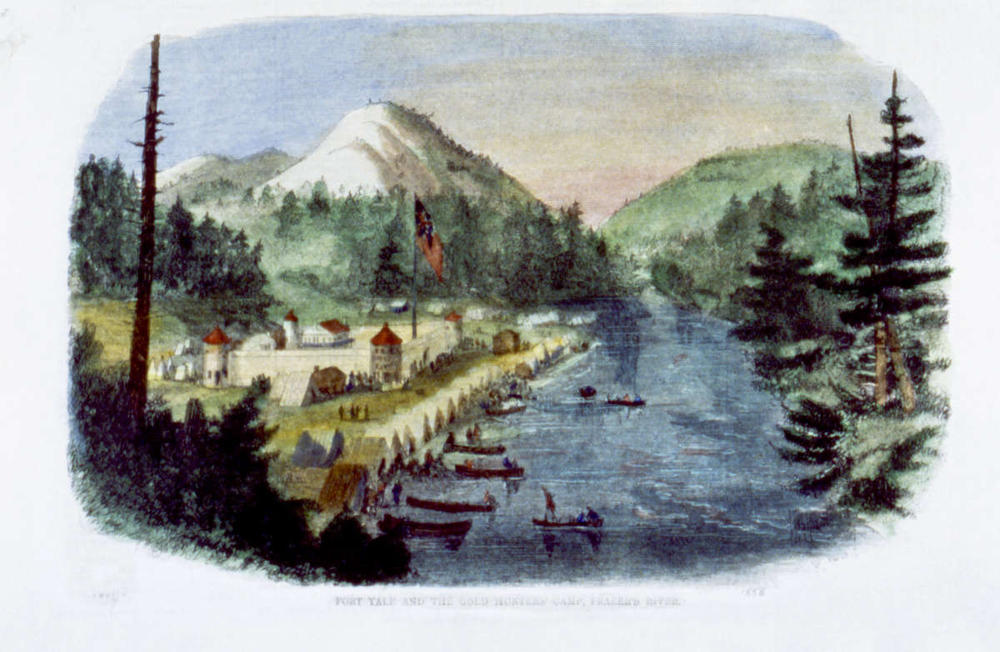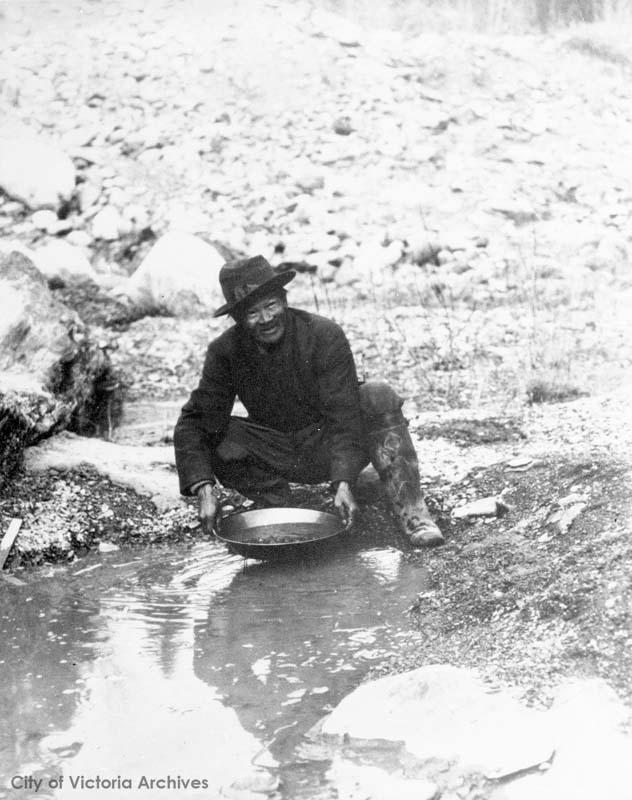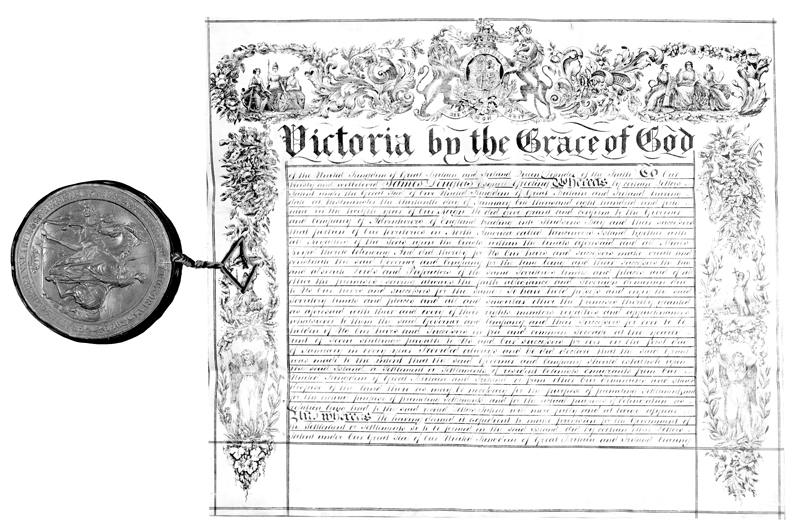After the creation of the Oregon Territory in 1848, Americans continued to move north of the Columbia River, and in 1853, Washington Territory was established there. In 1857, gold was discovered in the Fraser River. Word spread quickly and within the year, it developed into a full-fledged gold rush. Many of the gold miners were American.
The influx of Americans caused concern over possible annexation by the United States. Britain decided to act, and on August 2, 1858, a new colony on the continental mainland was created. After several possible names for the colony were abandoned, Queen Victoria herself decided upon the name - British Columbia. New Westminster was named its capital.
Unlike Vancouver Island, the Colony of British Columbia was free from Hudson’s Bay Company control. James Douglas was appointed as Governor of the new colony under the condition that he sever all ties with the Hudson’s Bay Company. He agreed and served as the Governor of both the Colony of Vancouver Island and the Colony of British Columbia at the same time. To establish order quickly, Douglas received temporary power to legislate by proclamation. He appointed a Legislative Council to advise him, but it had no constitutional basis of authority.
It was Queen Victoria that chose the name British Columbia for the new British colony on the west coast of North America. "Columbia" refers to the Columbia River, named by an American trader, Robert Gray, who sailed his ship, the Columbia Rediviva, into the mouth of the river in 1792.
The Columbia River flows from Columbia Lake in British Columbia through Washington state into Oregon where it meets the Pacific Ocean near the city of Astoria. "British Columbia" referred to the British side of the Columbia River. By 1858, this British colony stretched from the summit of the Rocky Mountains in the east to the Pacific Ocean in the west, and from the Finlay branch of the Peace River and the Nass Valley in the north to the international boundary on the 49th parallel in the south.
